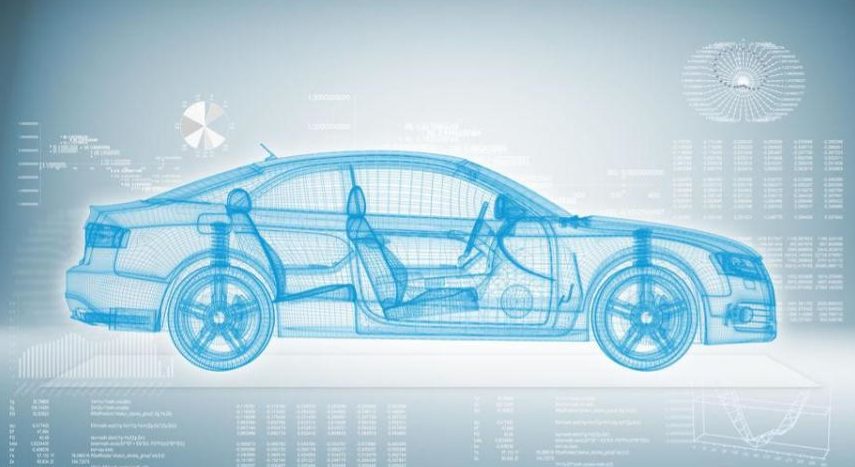SHARE
Hydrogen Fuel Cell Car: How does it Work?
Written by Agustín Galetti
The future of the automotive industry seems clear: the electric car. Even though lithium-based batteries have shown important progress in the past few years, it is still not possible to generate the same energy density as traditional fuels do. If we compare the energy contained in a kilogram of liquid fuel used in an internal combustion engine with the energy contained in a kilogram of lithium batteries, we will get an idea of the problem (see chart).
In order to compare the available energy in each fuel correctly, we would have to take into consideration their efficiency. In gasoline engines (Otto engine), the maximum efficiency goes from 25 to 30% and, in a diesel engine, it goes from 30 to 45%. However, in the real world, these percentages are usually lower.
In the case of electric engines, the efficiency usually goes from 85 to 90% but traditional liquid fuels are still indisputably superior to lithium batteries, especially when it comes to charging times.
Energy sources to power vehicles
| Energy source | MJ / kg | MJ / L | Average charging time |
| Lithium batteries | 0.31 – 0.49 | 2.5 | 2–13 hours (depending on available power) |
| Gasoline | 23.65 | 34.78 | 3 – 5 minutes |
| Diesel | 32.85 | 38.65 | |
| Ethanol | 30 | 24 | |
| Hydrogen (690bar, 15°C) | 120 | 4500 | 4 - 6 minutes |
| Hydrogen (gas) | 120 | 0.01005 |
Hydrogen: A new alternative for electricity generation
An attractive option is the use of hydrogen for electric energy production on board. Hydrogen and atmospheric oxygen result in water and electricity as long as the reaction happens inside an electrochemical cell called 'fuel cell'. Even though there are many types of batteries, the most appropriate to be used on board are the so-called PEMFC (Proton Exchange Membrane Fuel Cell). Perhaps the most remarkable characteristic of the fuel cell is that, as an electrochemical element, it is not subject to the Carnot cycle, therefore its efficiency is much greater than the internal combustion engines (55-60%). Hydrogen is the most abundant element in the universe and on Earth. Despite this, hydrogen can be mostly found in combination with other elements, thus creating water, organic matter, etc. Therefore, it is necessary to release it in its diatomic gas form (H2) before putting it inside a fuel cell. Currently, the hydrogen production at an industrial scale is done through reforming hydrocarbons (a petroleum product or a product from a renewable source) or through water electrolysis. Both processes require energy for the release of hydrogen, which impacts the production cost.Challenge: How to Store Hydrogen on a Vehicle
At present, the biggest challenge for the implementation of this technology in automotive applications is the complexity of hydrogen storage. Gas hydrogen at normal pressure and temperature conditions has a lot of energy per Kg but this is not the case of its volumetric base (see chart). To reduce its volume, it has to be compressed and stored at around 700 bar. To contain the gas at this pressure, the tank needs to have walls so thick that its weight is heavier than the gas inside. In these conditions, the contained energy per tank Kg to hydrogen ratio is drastically lower. Other alternatives for hydrogen storage are the liquid hydrogen tanks (−252,87 °C) and the storage in solid oxides. The first alternative requires high gas liquefaction costs and highly thermal isolating tanks. Also, some metal hydrides can store hydrogen in their crystal lattice and then release it at high temperatures. This technology is very promising although its current efficiency is very low.New technologies: The Hydrogen Fuel Cell Car
There is another developing technology, the so-called DFC (Direct Fuel Cells). They are fuel cells that are fed with liquid fuels, reformed or decomposed in H2 and CO2 in order to create water and electricity. In these cells, both H2 and electricity production takes place inside the same unit. Most researched DFCs are the Direct-Methanol Fuel Cell and the Direct-Ethanol Fuel Cell. Ethanol could actually be used directly in an internal combustion engine (Otto) but the benefit of this technology is that it not necessary to completely dehydrate the ethanol. Besides, the energy efficiency is greater since it is an electrochemical process, not thermal. A similar technology to DFC is the catalytic reforming of fuels in vehicles to feed fuel cells. This technology has also been studied and competes directly with DFCs since it has the same operating window. The catalytic reforming requires selective and stable catalysts that ensure a carbon monoxide-free hydrogen production since carbon monoxide reduces the useful life of the cells' electrodes. Electric cars with lithium batteries that need charging are a transitional technology. Cars that produce their own electric energy efficiently are the ultimate goal. The progress in hydrogen storage and production on board are key for the development of more efficient and environmentally friendly electric cars.Bibliography
- https://batteryuniversity.com/learn/article/electric_vehicle_ev
- https://cdn.shopify.com/s/files/1/0674/3651/files/panasonic-ncr18650-ga-spec-sheet.pdf
- https://www.conducetuciudad.com/es/recarga-del-coche-electrico/tiempo-de-recarga
- https://cleantechnica.com/2018/08/11/hydrogen-fuel-cell-battery-electric-vehicles-technology-rundown/
